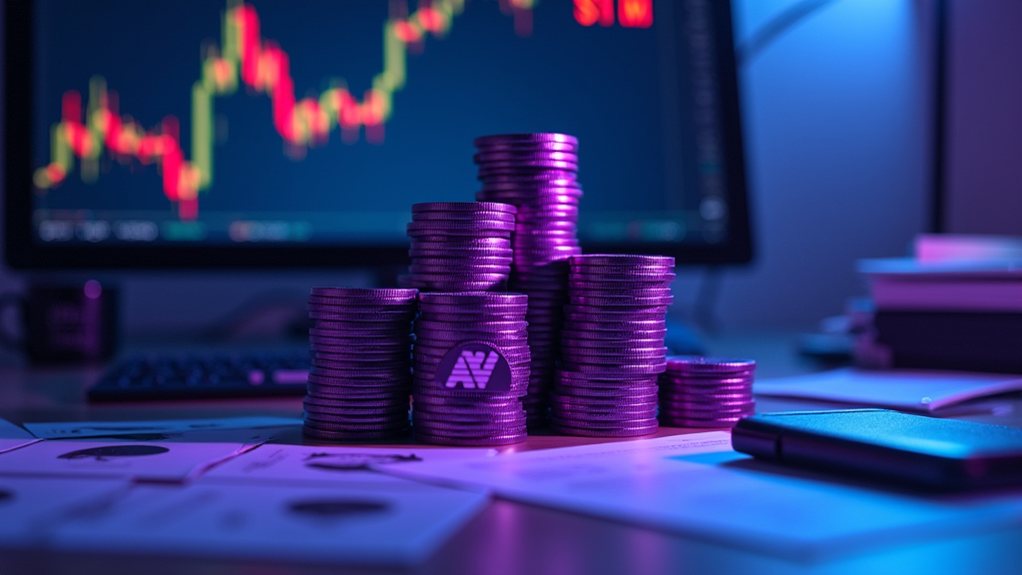Velo Protocol’s VELO token currently trades at $0.0132, experiencing a 15.14% weekly decline amid steady trading volumes between $11.18M and $18.65M. The protocol’s market capitalization ranges from $103M to $135M, with 7.39 billion tokens in circulation out of a 24 billion maximum supply. While long-term projections estimate values reaching $0.5154 by 2030, current market sentiment remains divided, reflecting broader dynamics in the digital asset’s ecosystem development and technological implementation.

While the cryptocurrency market continues to display its characteristic volatility, the Velo Protocol has experienced notable price movements in recent trading sessions, with its current value hovering between $0.0132 and $0.01825. The protocol, which launched in September 2020, has maintained a steady trading volume of approximately $11.18M to $18.65M over the past 24 hours, reflecting consistent market activity despite recent price fluctuations that include a 0.68% decrease in the past day and a 15.14% decline over the previous week.
The Velo Protocol’s market capitalization currently stands between $103M and $135M, positioning it within the mid-tier range of cryptocurrency projects, while its circulating supply of 7.39 billion tokens represents a fraction of its maximum supply cap of 24 billion VELO tokens. Long-term projections suggest the token could reach average trading prices of $0.5154 by 2030. The token has shown remarkable strength against major cryptocurrencies, demonstrating 372.36% growth versus ETH over the past year. Market analysts have produced varying forecasts for the protocol’s future performance, with predictions ranging from a bearish outlook of $0.031 to more optimistic projections exceeding $2, demonstrating the market’s divided sentiment regarding VELO’s potential trajectory.
Market sentiment on VELO remains divided, with analysts’ projections spanning from $0.031 to $2 despite its substantial market cap.
The protocol’s fundamental value proposition centers on its ability to facilitate collateral-backed digital credit issuance through smart contracts utilizing the Stellar Consensus Protocol, enabling businesses to create digital credits tied to fiat currencies. Unlike traditional cryptocurrencies, Velo’s approach aligns with fiat-collateralized stablecoins to maintain price stability. This technological foundation, combined with strategic partnerships with entities like Waves and the development of key products such as Quantum, Universe, and Nova Chain, has contributed to the protocol’s expanding ecosystem activities and transaction volumes.
Recent quarterly performance metrics indicate growing engagement within the Velo ecosystem, though social media sentiment remains mainly neutral with occasional bullish overtones. The protocol’s focus on cross-border payments and remittance solutions through its Web 3+ ecosystem continues to drive its development trajectory, while its integration of the Stellar Consensus Protocol provides a reliable foundation for transaction processing and smart contract execution.
FAQs
How Can I Safely Store Velo Protocol Tokens in a Digital Wallet?
Users can securely store VELO tokens through multiple wallet options, including hardware wallets like Ledger or Trezor for maximum security through cold storage.
Atomic Wallet provides a user-friendly alternative with multi-asset support and 24/7 customer service, while Universe Wallet offers hybrid exchange capabilities.
For ideal protection, implementing two-factor authentication and maintaining offline backups of private keys is crucial when using any digital storage solution.
What Are the Primary Use Cases for Velo Protocol in Defi?
Velo Protocol serves three primary DeFi use cases: cross-border payments, digital credit issuance, and collateralized lending.
The protocol enables fast, low-cost international transfers through its digital credit system, backed by VELO tokens at a 1:1 ratio with fiat currencies.
Financial institutions can utilize the platform for trustless settlements, while businesses benefit from automated payment processing and reduced intermediary fees through smart contracts.
Which Exchanges Currently Offer Velo Protocol Trading Pairs?
Several major cryptocurrency exchanges currently offer Velo Protocol trading pairs.
Gate.io provides VELO/USDT and VELO/ETH pairs, while OKX supports VELO/USDT and VELO/USDC trading options.
MEXC Global, HTX, and Bybit all offer VELO/USDT trading pairs.
Among these platforms, Gate.io and OKX demonstrate the highest trading volumes for Velo Protocol, with their USDT pairs showing particularly strong liquidity metrics.
How Does Velo Protocol’s Governance System Work for Token Holders?
Velo Protocol’s governance operates through VeloDAO, where VELO token holders participate in decision-making through voting on proposals.
Token holders can stake their assets to earn rewards while contributing to network stability. The system utilizes smart contracts to manage collateral and automatically rebalance values.
Through transparent blockchain-recorded decisions, stakeholders influence the protocol’s direction in proportion to their token holdings, with all governance activities potentially impacting token value.
What Is the Maximum Supply of Velo Protocol Tokens?
The maximum supply of Velo Protocol tokens is fixed at 24 billion VELO, representing the total number of tokens that can ever exist within the ecosystem.
This hard cap serves as a fundamental tokenomics parameter, ensuring scarcity and preventing inflationary pressure.
Currently, approximately 7.39 billion VELO tokens are in circulation, representing roughly 30.8% of the maximum supply, while the remaining tokens are allocated for different protocol functions and future distributions.









